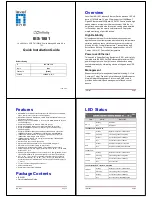
1-1
1
PoE Configuration
When configuring PoE, go to these sections for information you are interested in:
z
PoE Overview
z
PoE Configuration Task List
z
Configuring the PoE Interface
z
Configuring PoE Power Management
z
Configuring the PoE Monitoring Function
z
Upgrading PSE Processing Software Online
z
Configuring a PD Disconnection Detection Mode
z
Enabling the PSE to Detect Nonstandard PDs
z
Displaying and Maintaining PoE
z
PoE Configuration Example
z
Troubleshooting PoE
PoE Overview
Introduction to PoE
Power over Ethernet (PoE) means that power sourcing equipment (PSE) supplies power to powered
devices (PD) such as IP telephone, wireless LAN access point, and web camera from Ethernet
interfaces through twisted pair cables.
Advantages
z
Reliable: Power is supplied in a centralized way so that it is very convenient to provide a backup
power supply.
z
Easy to connect: A network terminal requires only one Ethernet cable, but no external power
supply.
z
Standard: In compliance with IEEE 802.3af, and a globally uniform power interface is adopted.
z
Promising: It can be applied to IP telephones, wireless LAN access points, portable chargers, card
readers, web cameras, and data collectors.
Composition
A PoE system consists of PoE power, PSE, and PD.
z
PoE power
The whole PoE system is powered by the PoE power, which includes external PoE power and internal
PoE power.
z
PSE
PSE detecting that a PD is unplugged, the PSE stops supplying power to the PD.
An Ethernet interface with the PoE capability is called PoE interface. Currently, a PoE interface can be
an FE or GE interface.
z
PD
















































